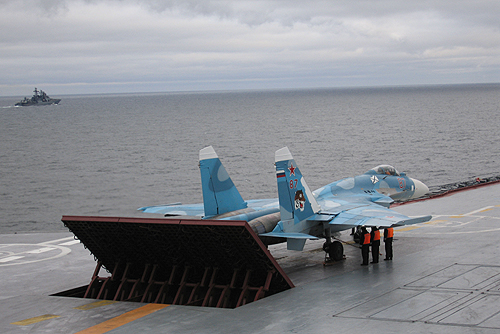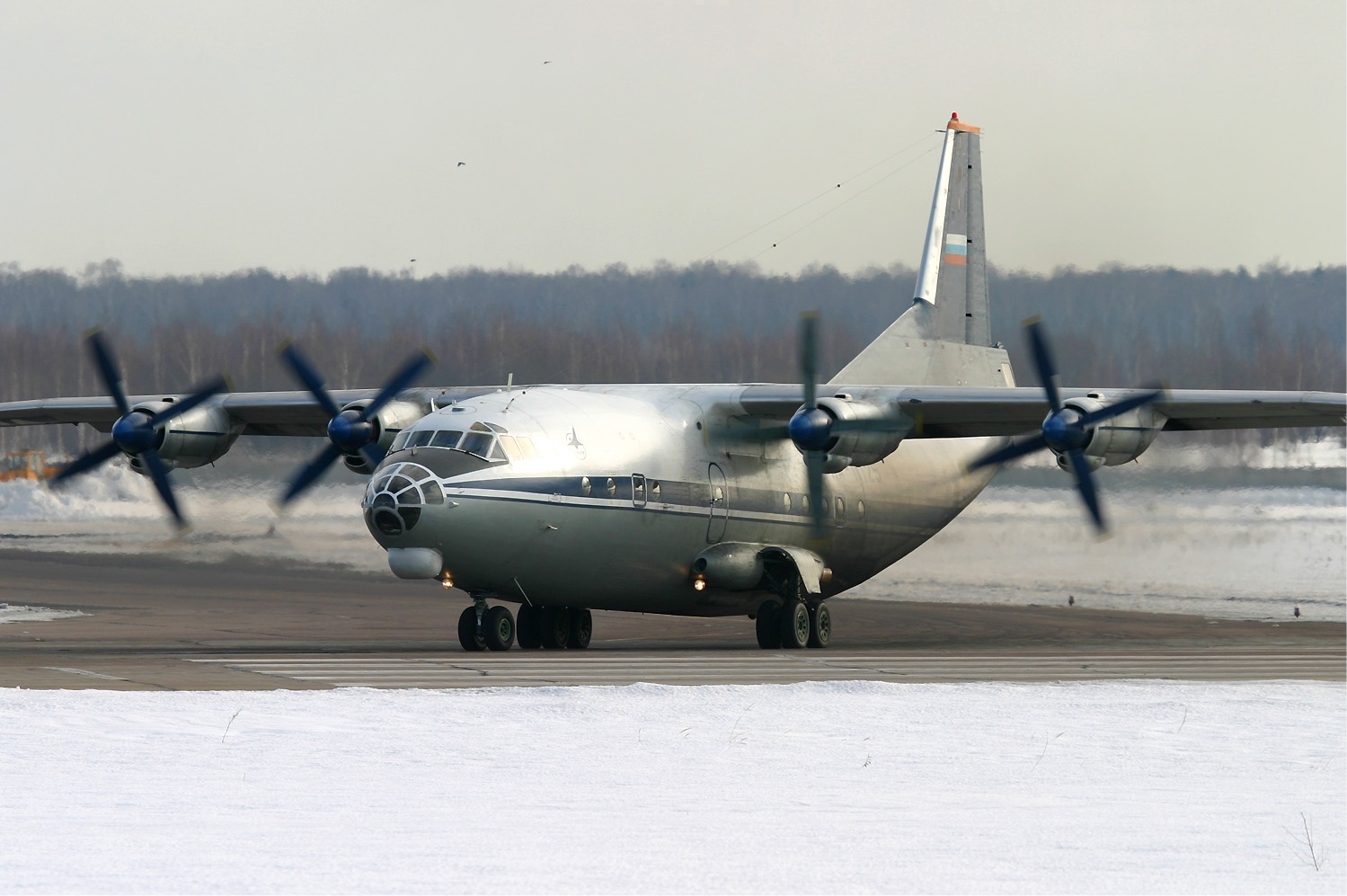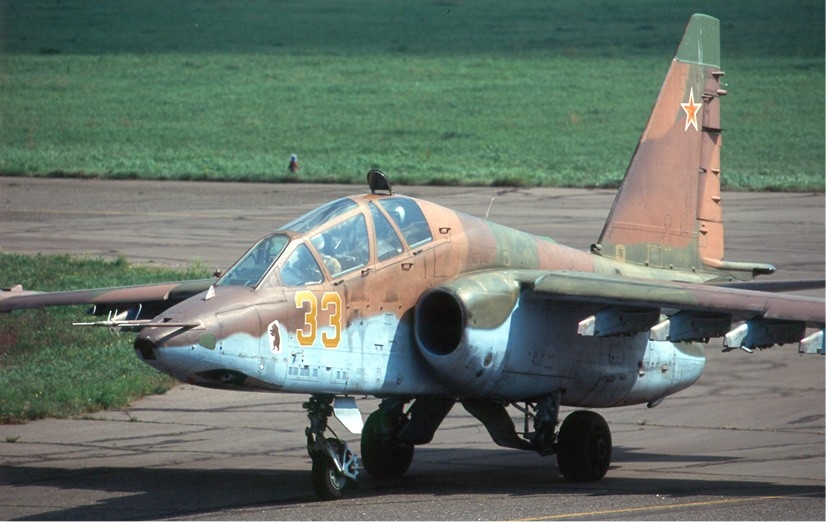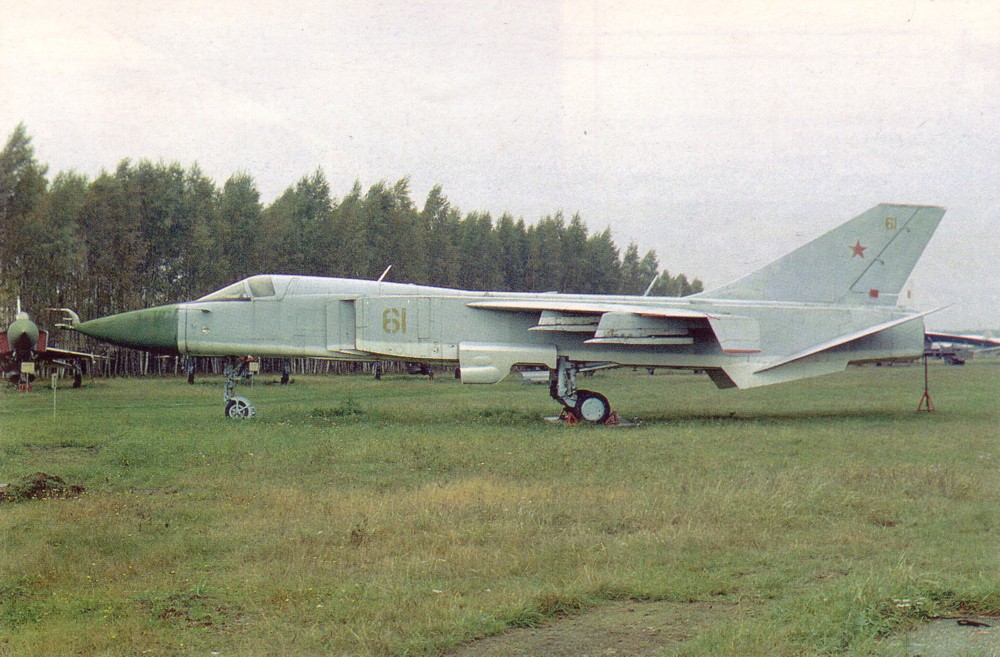|
Su-27KUB
The Sukhoi Su-33 (russian: Сухой Су-33; NATO reporting name: ''Flanker-D'') is an all-weather carrier-based twin-engine air superiority fighter designed by Sukhoi and manufactured by Komsomolsk-on-Amur Aircraft Production Association, derived from the Su-27 and initially known as the Su-27K. Compared with the Su-27, the Su-33 has a strengthened undercarriage and structure, folding wings and stabilators, all for carrier operations. The Su-33 has canards, and its wings are larger than the Su-27 for a slower stall speed. The Su-33 has upgraded engines and a twin nose wheel, and is air refuelable. First used in operations in 1995 aboard the aircraft carrier , the fighter officially entered service in August 1998, by which time the designation "Su-33" was used. Following the break-up of the Soviet Union and the subsequent downsizing of the Russian Navy, only 24 aircraft were produced. Attempted sales to China and India fell through. With plans to retire the Su-33 once they ... [...More Info...] [...Related Items...] OR: [Wikipedia] [Google] [Baidu] |
Sukhoi Su-27
The Sukhoi Su-27 (russian: Сухой Су-27; NATO reporting name: Flanker) is a Soviet-origin twin-engine supermaneuverable fighter aircraft designed by Sukhoi. It was intended as a direct competitor for the large US fourth-generation jet fighters such as the Grumman F-14 Tomcat and McDonnell Douglas F-15 Eagle, with range, heavy aircraft ordnance, sophisticated avionics and high maneuverability. The Su-27 was designed for air superiority missions, and subsequent variants are able to perform almost all aerial warfare operations. It was designed with the Mikoyan MiG-29 as its complement. The Su-27 entered service with the Soviet Air Forces in 1985. The primary role was long range air defence against American SAC Rockwell B-1B Lancer and Boeing B-52G and H Stratofortress bombers, protecting the Soviet coast from aircraft carriers and flying long range fighter escort for Soviet heavy bombers such as the Tupolev Tu-95, Tupolev Tu-22M and Tupolev Tu-160. The Su-27 was d ... [...More Info...] [...Related Items...] OR: [Wikipedia] [Google] [Baidu] |
Komsomolsk-on-Amur Aircraft Production Association
Komsomolsk-on-Amur Aircraft Plant (KnAAPO or KnAAZ; russian: Комсомольский-на-Амуре авиационный завод); based in Komsomolsk-on-Amur in the Russian Far East, is the largest aircraft-manufacturing company in Russia. The company is among Khabarovsk Krai's most successful enterprises, and for years has been the largest taxpayer of the territory. In 1999 and 2001 the Russian Union of Industrialists and Entrepreneurs and the Chamber of Commerce and Industry of RF granted KnAAPO the title "best Russian enterprise". Production The company currently produces Su-27SM/SKM fighters, Su-30MK2 multirole fighters, Su-33 and Su-27KUB shipborne fighters, and Be-103 amphibians, among others. The assembly line for all versions of the new Sukhoi Superjet 100 is located at the company's facilities. Together with Novosibirsk Aircraft Production Association (which focuses on component production), the company is expected to produce 70 Superjet airframes by 2012 ... [...More Info...] [...Related Items...] OR: [Wikipedia] [Google] [Baidu] |
WikiProject Aircraft
A WikiProject, or Wikiproject, is a Wikimedia movement affinity group for contributors with shared goals. WikiProjects are prevalent within the largest wiki, Wikipedia, and exist to varying degrees within sister projects such as Wiktionary, Wikiquote, Wikidata, and Wikisource. They also exist in different languages, and translation of articles is a form of their collaboration. During the COVID-19 pandemic, CBS News noted the role of Wikipedia's WikiProject Medicine in maintaining the accuracy of articles related to the disease. Another WikiProject that has drawn attention is WikiProject Women Scientists, which was profiled by '' Smithsonian'' for its efforts to improve coverage of women scientists which the profile noted had "helped increase the number of female scientists on Wikipedia from around 1,600 to over 5,000". On Wikipedia Some Wikipedia WikiProjects are substantial enough to engage in cooperative activities with outside organizations relevant to the field at issue. For e ... [...More Info...] [...Related Items...] OR: [Wikipedia] [Google] [Baidu] |
Dissolution Of The Soviet Union
The dissolution of the Soviet Union, also negatively connoted as rus, Разва́л Сове́тского Сою́за, r=Razvál Sovétskogo Soyúza, ''Ruining of the Soviet Union''. was the process of internal disintegration within the Soviet Union (USSR) which resulted in the end of the country's and its federal government's existence as a sovereign state, thereby resulting in its constituent republics gaining full sovereignty on 26 December 1991. It brought an end to General Secretary Mikhail Gorbachev's (later also President) effort to reform the Soviet political and economic system in an attempt to stop a period of political stalemate and economic backslide. The Soviet Union had experienced internal stagnation and ethnic separatism. Although highly centralized until its final years, the country was made up of fifteen top-level republics that served as homelands for different ethnicities. By late 1991, amid a catastrophic political crisis, with several republics alre ... [...More Info...] [...Related Items...] OR: [Wikipedia] [Google] [Baidu] |
Crimea
Crimea, crh, Къырым, Qırım, grc, Κιμμερία / Ταυρική, translit=Kimmería / Taurikḗ ( ) is a peninsula in Ukraine, on the northern coast of the Black Sea, that has been occupied by Russia since 2014. It has a population of 2.4 million. The peninsula is almost entirely surrounded by the Black Sea and the smaller Sea of Azov. The Isthmus of Perekop connects the peninsula to Kherson Oblast in mainland Ukraine. To the east, the Crimean Bridge, constructed in 2018, spans the Strait of Kerch, linking the peninsula with Krasnodar Krai in Russia. The Arabat Spit, located to the northeast, is a narrow strip of land that separates the Sivash lagoons from the Sea of Azov. Across the Black Sea to the west lies Romania and to the south is Turkey. Crimea (called the Tauric Peninsula until the early modern period) has historically been at the boundary between the classical world and the steppe. Greeks colonized its southern fringe and were absorbed by the Ro ... [...More Info...] [...Related Items...] OR: [Wikipedia] [Google] [Baidu] |
Arresting Gear
An arresting gear, or arrestor gear, is a mechanical system used to rapidly decelerate an aircraft as it lands. Arresting gear on aircraft carriers is an essential component of naval aviation, and it is most commonly used on CATOBAR and STOBAR aircraft carriers. Similar systems are also found at land-based airfields for expeditionary or emergency use. Typical systems consist of several steel wire ropes laid across the aircraft landing area, designed to be caught by an aircraft's tailhook. During a normal arrestment, the tailhook engages the wire and the aircraft's kinetic energy is transferred to hydraulic damping systems attached below the carrier deck. There are other related systems which use nets to catch aircraft wings or landing gear. These ''barricade'' and ''barrier'' systems are only used for emergency arrestments for aircraft without operable tailhooks. History Arresting cable systems were invented by Hugh Robinson and were utilized by Eugene Ely on his first land ... [...More Info...] [...Related Items...] OR: [Wikipedia] [Google] [Baidu] |
Steam Catapult
An aircraft catapult is a device used to allow aircraft to take off from a very limited amount of space, such as the deck of a vessel, but can also be installed on land-based runways in rare cases. It is now most commonly used on aircraft carriers, as a form of assisted take off. In the form used on aircraft carriers the catapult consists of a track, or slot, built into the flight deck, below which is a large piston or ''shuttle'' that is attached through the track to the nose gear of the aircraft, or in some cases a wire rope, called a catapult bridle, is attached to the aircraft and the catapult shuttle. Other forms have been used historically, such as mounting a launching cart holding a seaplane on a long girder-built structure mounted on the deck of a warship or merchant vessel, but most catapults share a similar sliding track concept. Different means have been used to propel the catapult, such as weight and derrick, gunpowder, flywheel, air pressure, hydraulic, and steam p ... [...More Info...] [...Related Items...] OR: [Wikipedia] [Google] [Baidu] |
Yakovlev Yak-141
The Yakovlev Yak-141 (russian: Яковлев Як-141; NATO reporting name "Freestyle"), also known as the Yak-41, is a Soviet supersonic vertical takeoff/landing (VTOL) fighter aircraft designed by Yakovlev. It was used for testing. Design and development Yakovlev always believed the Yak-38 to be an interim aircraft, developed to gain experience designing and developing military VTOL aircraft. Even before the Yak-38's introduction, the Soviet Navy desired a more comprehensive aircraft, with greater capabilities than the Yak-38 offered. The result was a design contract offered to Yakovlev in 1975. The requirement was for an aircraft with only one mission: air defense of the fleet. Unlike the Yak-38, this aircraft was to have sustained supersonic speed. Maneuverability, radar and weapons loads were expected to be similar to those of current front-line fighters. For the Soviet Navy this aircraft was to be their next generation VTOL fighter. For Yakovlev the aircraft was viewed ... [...More Info...] [...Related Items...] OR: [Wikipedia] [Google] [Baidu] |
Su-25
The Sukhoi Su-25 ''Grach'' (russian: Грач (''rook''); NATO reporting name: Frogfoot) is a subsonic, single-seat, twin-engine jet aircraft developed in the Soviet Union by Sukhoi. It was designed to provide close air support for Soviet Ground Forces. The first prototype made its maiden flight on 22 February 1975. After testing, the aircraft went into series production in 1978 in Tbilisi in the Georgian Soviet Socialist Republic. Early variants included the Su-25UB two-seat Trainer aircraft, trainer, the Su-25BM for Target tug, target-towing, and the Su-25K for export customers. Some aircraft were upgraded to the Su-25SM standard in 2012. The Su-25T and the Su-25TM (also known as the Su-39) were further developments, not produced in significant numbers. The Su-25, and the Sukhoi Su-34, Su-34, were the only armoured, Fixed-wing aircraft, fixed-wing aircraft in production in 2007.Gordon and Dawes 2004. Su-25s are in service with Russia, other Commonwealth of Independent States ... [...More Info...] [...Related Items...] OR: [Wikipedia] [Google] [Baidu] |
Sukhoi Su-24
The Sukhoi Su-24 ( NATO reporting name: Fencer) is a supersonic, all-weather attack aircraft developed in the Soviet Union. The aircraft has a variable-sweep wing, twin-engines and a side-by-side seating arrangement for its crew of two. It was the first of the USSR's aircraft to carry an integrated digital navigation/attack system. It remains in service with the Russian Air Force, Syrian Air Force, Ukrainian Air Force, Algerian Air Force and various other air forces to which it was exported. Development Background One of the conditions for accepting the Sukhoi Su-7B into service in 1961 was the requirement for Sukhoi to develop an all-weather variant capable of precision air strikes. Preliminary investigations with ''S-28'' and ''S-32'' aircraft revealed that the basic Su-7 design was too small to contain all the avionics required for the mission. OKB-794 (later known as Leninets) was tasked with developing an advanced nav/attack system, codenamed ''Puma'', which would be ... [...More Info...] [...Related Items...] OR: [Wikipedia] [Google] [Baidu] |
MiG-23
The Mikoyan-Gurevich MiG-23 (russian: Микоян и Гуревич МиГ-23; NATO reporting name: Flogger) is a variable-geometry fighter aircraft, designed by the Mikoyan-Gurevich design bureau in the Soviet Union. It is a third-generation jet fighter, alongside similar Soviet aircraft such as the Su-17 "Fitter". It was the first Soviet fighter to field a look-down/shoot-down radar, the RP-23 Sapfir, and one of the first to be armed with beyond-visual-range missiles. Production started in 1969 and reached large numbers with over 5,000 aircraft built, making it the most produced variable-sweep wing aircraft in history. Today the MiG-23 remains in limited service with some export customers. The basic design was also used as the basis for the Mikoyan MiG-27, a dedicated ground-attack variant. Among many minor changes, the MiG-27 replaced the MiG-23's nose-mounted radar system with an optical panel holding a laser designator and a TV camera. Development The MiG-23's predece ... [...More Info...] [...Related Items...] OR: [Wikipedia] [Google] [Baidu] |



.jpg)


%2C_F-14_on_catapult.jpg)



